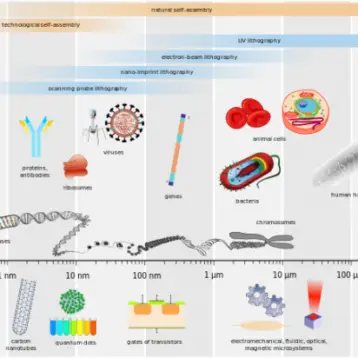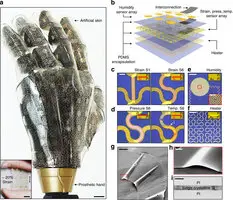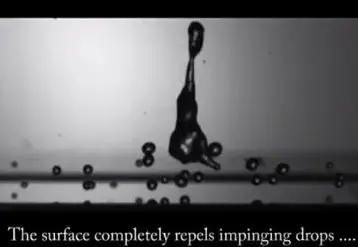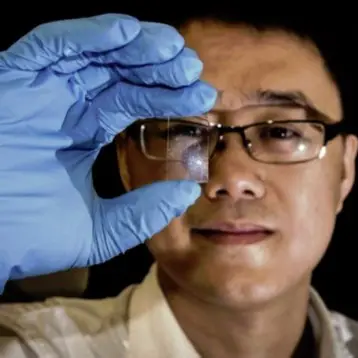Carbon nanotubes are tiny, hollow cylinders whose walls are lattices of carbon atoms. They are so tiny that their thickness is about 10,000 times smaller than a human hair. Their discovery (made almost 20 years ago) gave researchers the opportunity to improve batteries, transistors, sensors, and solar cells.
The ions observed – marching through a tiny carbon-nanotube channel – make the channels a prominent component in future devices. Since these channels allow scientists to study chemical reactions at the single-molecule level, better electronic devices can be designed, relying on ion-movement; even more likely, desalination systems could be improved greatly by applying the new carbon-nanotube channels.
The research team from the Massachusetts Institute of Technology (MIT) reported in the journal Science that charged molecules, such as sodium and chloride ions (formed when salt is dissolved in water), can not only flow rapidly through carbon nanotubes, but also can do so one at a time. This phenomenon, observed under specific conditions, was likened to people taking turns crossing a bridge.
The new system allows passage of much smaller molecules over greater distances than any existing nanochannel (up to half a millimeter). In comparison, the most commonly studied nanochannel is a silicon nanopore, made by drilling a hole through a silicon membrane. These channels are much shorter than the new nanotube channels (the nanotubes are about 20,000 times longer), so they only permit passage of large molecules such as DNA or polymers — anything smaller would move too quickly to be detected.
The paper, authored by associate professor Michael Strano, describes the construction process of the new nanochannel. By growing a nanotube across a one-centimeter-by-one-centimeter plate, and connecting two water reservoirs, the team achieved the unprecedented feat of transferring single ions (one at a time), over a much-larger distance than any other past system.
Each reservoir contains an electrode, one positive and one negative. Because electricity can flow only if protons — positively charged hydrogen ions, which make up the electric current — can travel from one electrode to the other, the researchers can easily determine whether ions are traveling through the nanotube.
“From a molecular perspective, these are exceptionally long distances,” says Shekhar Garde, professor of chemical engineering at Rensselaer Polytechnic Institute. “This bridging of the gap between nano and the larger world could open up opportunities for harnessing nanoscale phenomena for macroscale applications — from water purification to nanofluidic networks, sensing and fuel cells.” Garde is not a team member, and therefore was not involved with the research.
One of the interesting findings of the research is that protons flow steadily across the nanotube, carrying an electric current. This ease-of-flow is due to the protons’ small size. However, the researchers noticed that other positively charged ions, such as sodium, get through only if enough electric field is applied. Moreover, sodium ions are much larger than protons, so they take longer to cross once they enter. While they travel across the channel, they block protons from flowing, leading to a brief disruption in current known as the Coulter effect. According to Strano, the channels allow only positively charged ions to flow through them because the ends of the tubes contain negative charges, which attract positive ions. However, he plans to build channels that attract negative ions by adding positive charges to the tube.
The researchers hope to complete these two types of channels as soon as possible, and to embed them in a membrane that could also be used for water desalination. More than 97 percent of Earth’s water is in the oceans, but that vast reservoir is undrinkable unless the salt is removed. The application offered is based on the new nanotubes – desalinating salt water more efficiently than traditional methods.
Contemporary desalination methods utilize distillation and reverse osmosis; these are expensive and require lots of energy. In comparison, a nanotube membrane that allows both sodium and chloride ions (which are negatively charged) to flow out of seawater is much cheaper, and therefore the team is positive that in the future it would be the preferred way to provide clean, drinkable water.
This recent study marks the first time that individual ions dissolved in water have been observed at room temperature. This means the nanochannels could also detect impurities, such as arsenic or mercury, in drinking water. “If a single arsenic ion is floating in solution, you could detect it,” concludes Strano.
TFOT also covered the nanowire batteries researched at Stanford University, which could hold 10 times more power than regular batteries. Another related TFOT story, also from Stanford University, is the improvement of regular lithium ion batteries’ life, using carbon nanotubes.
For more information about MIT’s achievement – pushing ions through carbon nanotubes – see the official press release.










